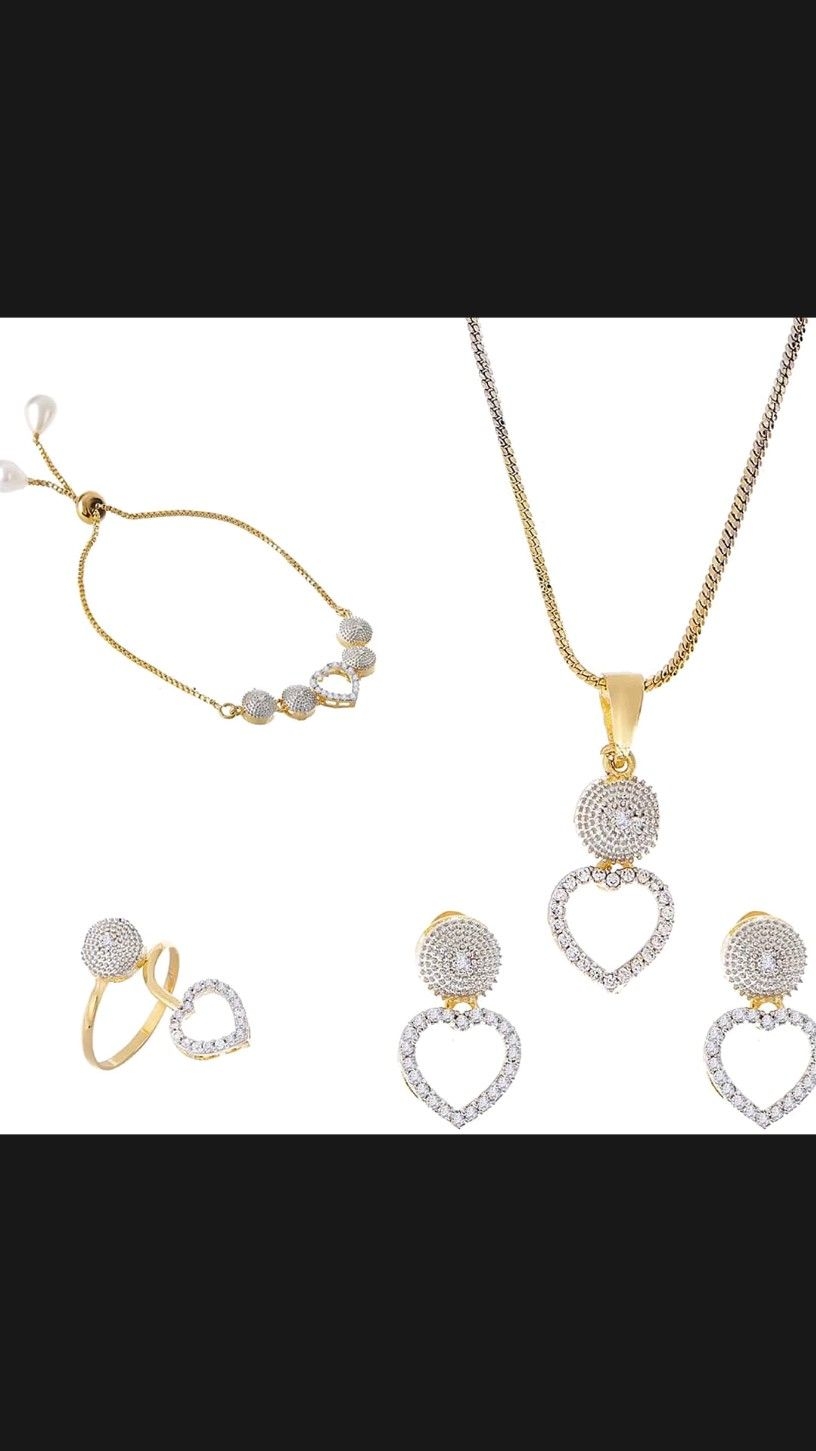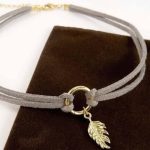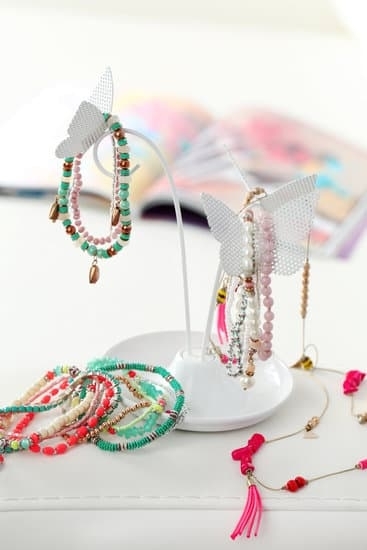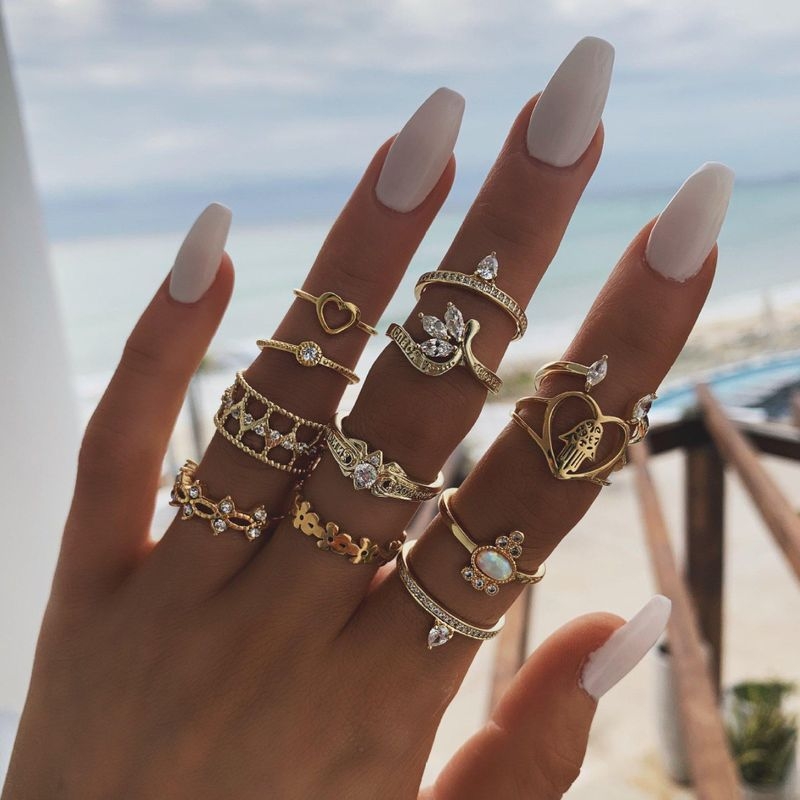Victorian Era fashion jewelry remains popular today because of its romantic and elegant look. Jewelry from this era, usually from the mid-1800s to 1901, is sought after for its interesting designs with intricate details. The Victorians loved elaborate designs, often combining several pieces of jewelry together or including ornamental trims for added embellishment.
At the time, these jewelry pieces were made with luxurious materials such as diamonds, gold and silver, pearls and special gemstones like opals and chrysoberyls. Victorian jewelry styles are characterised by bold motifs that emphasize delicacy and femininity.
One of the most defining characteristics of Victorian era jewelry is the appearance of symbolic images woven into their intricate designs. These symbols signify the wearer’s values or beliefs – like a cross which represents faithfulness – representing messages or stories within each design.
Symbols like anchors and hearts dotted around earrings or necklaces inspired by nature were very popular at the time also take us back to more romantic times when life was simpler and more meaningful. As well as representing values, some pieces conveyed certain status – if diamonds were included in an accessory then it held a greater sense of prestige since these gems were hard to come by at the time.
The highly detailed craftsmanship involved in producing these elaborate jewels was designed to make them eye-catching which is why you see them today in high-end stores. Combined with its symbolism Victoria Era fashion jewelry brings a timeless elegance to any wardrobe that has endured through generations until now because this fashion style reminds people of a bygone age when fashion was delicate but meaningful.
Grandeur of Jewelry During the Victorian Era
The Victorian era is marked by lavishness, romance and classic elegance. This extends to fashion jewelry of the period as well that is characterized by a range of eye-catching designs with intricate details.
With the growing popularity of industrialization, customs and traditions became even more expressed in fashion trends and jewelry was no exception. During this time, wealthy families had access to some of the world’s finest jewels and it was common for them to express their status in society through marvellous accessories like jewels and jewelry pieces.
Victorian era jewelry design reflected an amalgamation of myriad influences from different sources including Romans, Greeks, French Rococo styles and many others. Brooches were very popular during this period; they were crafted from multiple types of materials including gold, diamonds, silver and rubies among others. These pieces often featured elaborate engravings that conveyed romanticism as well as religious education at the same time. This allowed men to express their religious beliefs through aesthetically pleasing designs with motifs of faith.
Victorian earrings feature bold colors along with large stones like diamonds that are set on posts or wires to make a subtle statement as opposed to loud overstatement. Necklaces during this period often consisted of several small beads arranged together into one piece while pendants usually had large bold shapes featuring semi-precious or precious metals paired wonderfully with colorful gems or pieces like cameos.
Rings also evolved in spectacular ways during the Victorian era due to advances in manufacturing techniques which allowed for larger sized stones set within a single piece. It is no surprise that these days we still admire some of the classic Victorian era jewelry pieces which remind us of a timelessly beautiful era filled with grandeur, elegance and romance.
Popular Styles of Jewelry In That Era
The Victorian Era, which lasted from roughly 1837 to 1901, saw a variety of changes across all forms of life. This includes fashion, with the emergence of photography and the introduction of some revolutionary new pieces. Jewelry was no exception: during this period, a range of unique and ornamental jewelry adorned both men and women in Europe, creating some beautiful and intricate designs.
While much of what made Victorian era jewelry so captivating originated in Europe, these styles quickly spread across the world. Here’s a closer look at some of the most common styles of jewelry seen in that era.
Perhaps the best reminder we have of the elegance and craftsmanship associated with the Victorian Era is the layered necklace: made up of multiple tiers containing small colorful beads or gemstones sewn by hand onto strands. These necklaces could be up to several feet in length – often released from special cases – tying together an ensemble for a uniquely sophisticated look.
They were most often seen with precious stones such as pearls, turquoise or coral but glass beads were also popular for those looking for something more affordable and easy to care for.
Earring figures were also growing in popularity among women during this era; they were simple and elegant pieces that hung from earrings rather than encircling them like hoops did. These earring figures were typically set with stones such as rubies, sapphires or diamonds; other popular gemstones during this period included amethyst or garnet.
Brooches were also very fashionable at this time; they could range from fun and whimsical designs that incorporated shaped stones into geometric shapes to long pendants that held clusters of diamonds or other gems to create unique shapes worthy displaying on any outfit.
The sheer volume of precious materials used to create opulent pieces made them highly sought after but also prohibitively expensive for many people – which meant you had to be particularly wealthy (or know where to look) if you wanted access to even just one high-quality piece.
Commonly Used Metals and Stones
The Victorian era of fashion jewelry was incredibly popular and one of the most distinct characteristics of this period is the usage of many different types of metals and stones. During this time, different alloys like sterling silver, gold plated metal, brass and other materials were widely used for making both costume styled pieces, as well as more delicate pieces.
For example, the favored precious metal in this period was 9K and 18K gold that was primarily used for fine jewelry items. This metal was also commonly found and utilized with silver, which gave some stunning pieces a wonderful two-toned effect that made them very eye-catching.
As for stones and gems, pearls were particularly popular amongst women during that time due to their glossy finish and affordable cost. Natural pearls were mainly imported from places like India or Ireland, yet shell cameos were also created to give a similar pearl-like effect.
Other semi-precious stones such as crystal quartz, amber and paste were also used to add a more vibrant look to the pieces but they were significantly cheaper than diamonds or sapphires so they were mainly preferred by people with smaller budgets.
Impressive designs combined with these variety of materials made Victorian era fashion jewelry an extremely attractive feature amongst many people during that time. Commonly seen adorning full style ensembles or intricate hairstyles on significant events of the times such as weddings or balls across Europe. Additionally, portable items like lockets and necklaces featuring motif designs didn’t only provide a special way to highlight ones appearance so much; they also offered women a way of expressing their personal aesthetic preferences.
In conclusion, Victorian era fashion jewelry made use of multiple types of metals and stones resulting in diverse style selections for jewels lovers back then – setting precedence for what we still consider fashionable today.
A Closer Look At the Symbolic Meaning of Jewelry
The Victorian era was a time of great wealth, opulence and excess, which is reflected in the intricate and enthralling jewelry that were produced. This period saw many new technologies being developed as well as the adoption of different jewel-working techniques that allowed for more elaborate pieces to be created. Jewelry of this era reveals much about the ideals, beliefs and pastimes of its owners.
Jewelry during the Victorian era was often worn as a symbol of one’s class or position within society. From stars and diamonds to circles and ribbons, each shape carried its own distinctive meaning that was typically understood by all. The more intricate pieces were associated with royalty and wealth, while simpler designs were accessible to people from all walks of life.
Along with its symbolic value, certain gems also held spiritual meaning for many people in the Victorian age. Interestingly enough, these stones weren’t chosen simply for aesthetic reasons; rather they had an important place in occult beliefs. Many believed that wearing certain pieces during varying times of day could influence or modify the person’s physical or emotional state.
Such gems included turquoise (for courage), garnet (for protection), coral (for healing) , quartz crystal (for clairvoyance) and many others. Teardrop pendants – popular at this time – also served to emphasize sorrow when worn on mourning garments to commemorate deceased loved ones.
Overall, jewelry during this period can tell us a great deal about life back then through both its decorative elements found on the piece itself as well as the jewels used within it. Whether elaborately decorated or simply made up of traditional symbols and stones, each item uniquely reflects an aspect of the emotion and cultural dynamics experienced by people across Europe at the tail end of.
Evolving Jewelry Trends During the Victorian Era
The Victorian Era was a period where jewelry styles changed and fluctuated quite dramatically. Regal crown jewels, luxurious neck charms and grandiose earrings were all popular choices amongst the elite upper class during that time in history. Although many luxuries pieces were bought as status symbols, it was also common for less wealthy members of society to purchase similar pieces as gifts for their loved ones.
Mixing different elements such as gold, diamonds and other precious materials with more humble materials such as animal bones and teeth highlighted a range of various elements from nature in jewelry designs – an aesthetic philosophy that was particularly appreciated during the period. Precious metals, coral stones and enamel work were all commonly used in Victorian Era jewelery designs during this affluent era. Many pieces featured intricate engravings or etchings to add refinement to traditional works of art.
Thanks to new technological advancements during the era, innovative ways of making jewelry become more widely available which resulted in even more elaborate designs while colors became brighter due to higher quality ingredients being accessible. Across Europe and America, a focus on fashion evolved but still kept in line with core British values – namely age-old traditions such as family crest brooches or sentimental lockets featuring pictures of beloved people inside; styles that still remain popular today.
Most favored at that time however was ‘Victoria amethyst’; a specific type of stone gifted to Queen Victoria by her beloved husband.
This led to the production of a variety of amethyst based jewels which included intricate rings set with amethysts and other precious stones (the most notable being made from rose gold). As stated earlier these pieces could range from being affordable knick knacks given away within social circles or highly embellished displays of wealth for those who could afford them – but both held true fashion statements within their selected realms during an everchanging era of style diversity.
Creative Ways to Incorporate Victorian Jewelry into Any Look
The Victorian Era was a period of time around the late 1800s when fashion trends flourished and one of those major trends was jewelry. During this era Jewelry took on a whole new level and stood out based on its over-the-top designs and elements.
For example, intricate gemstones such as gold, diamonds and pearls were popular components of any ensemble. As a result of the unique design choices made during the Victorian era that’s still celebrated today, it is possible to incorporate Victorian jewelry into any look with contemporary styling tips.
One way to successfully bring in a hint of modern with vintage is by pairing distressed dark denim jeans with a simple plain t-shirt accompanied by an impressive piece from Victorian era. Statement necklaces, brooches and pins were all popular in that period.
The dazzling colors featured along with the intricate details give off quite an ornate display for any outfit. These pieces can be worn alone or used to create dimension against subtle colors such as grey or white blouses or T-shirts allowing the jewelry to standout more than ever before.
Not only is it possible to make these pieces stand out but another way to give your look a bit more pizzazz is by layering different charms when sporting arm party looks. With creative use of elements in large earrings, layered chains or chokers it allows you to create bolder looks when combining modern shapes and pops of color with those found during this time period which are some timeless pieces that people can’t help but admire.
Furthermore, another great way to capture the essence of this iconic style would be through statement hats featuring jewels encrusted brims or plumes for extra flair. For example if you are wearing white dress then you could go for dark embroidery chain necklace as accessory which will help bring out cute contrast from other side accessories without taking away from authenticity of total ensemble.
How to Care for and Preserve Vintage Jewelry
The Victorian Era was an exciting time for fashion jewelry. Jewelers created unique pieces that exemplified the modern woman of the era with intricate details and distinct designs. Although these pieces are often now seen as vintage, some of them could prove to be quite valuable if cared for correctly. There are some steps that should be taken when it comes to preserving and caring for these classic pieces.
First, it is important to store these pieces in a cool and dry location, away from direct sunlight or bright locations. These items should also be kept away from humidity, which can cause oxidation and fading. For preservation purposes, consider wrapping each item separately so as to minimize its contact with air which helps to prevent tarnishing or rusting.
In order to keep your jewelry in optimal condition, cleaning is key. Before proceeding with any kind of cleaning process, make sure you inspect the piece itself or even get it appraised first in order to ensure that no damage occurs during the cleaning process.
Once you have done this then determine what type of material it is made of and use mild soap soap suitable for that material such as a gentle liquid detergent or even baking soda on silver pieces in order to remove any dirt or grime build up. Caring requires constant attention; remember regular maintenance and inspection every few months in order to help preserve the beauty of your vintage jewelry piece.
Although they may not be directly worn everyday like modern fashion accessories, taking time care for these sentimental heirlooms will ensure their timeless beauty will continue shining through many generations come. If properly preserved and cleaned regularly, not only will the jewels remain aesthetically pleasing but their value could also potentially increase over time; so start caring for those vintage jewels today.

Welcome to my jewelry blog! My name is Sarah and I am the owner of this blog.
I love making jewelry and sharing my creations with others.
So whether you’re someone who loves wearing jewelry yourself or simply enjoys learning about it, be sure to check out my blog for insightful posts on everything related to this exciting topic!





